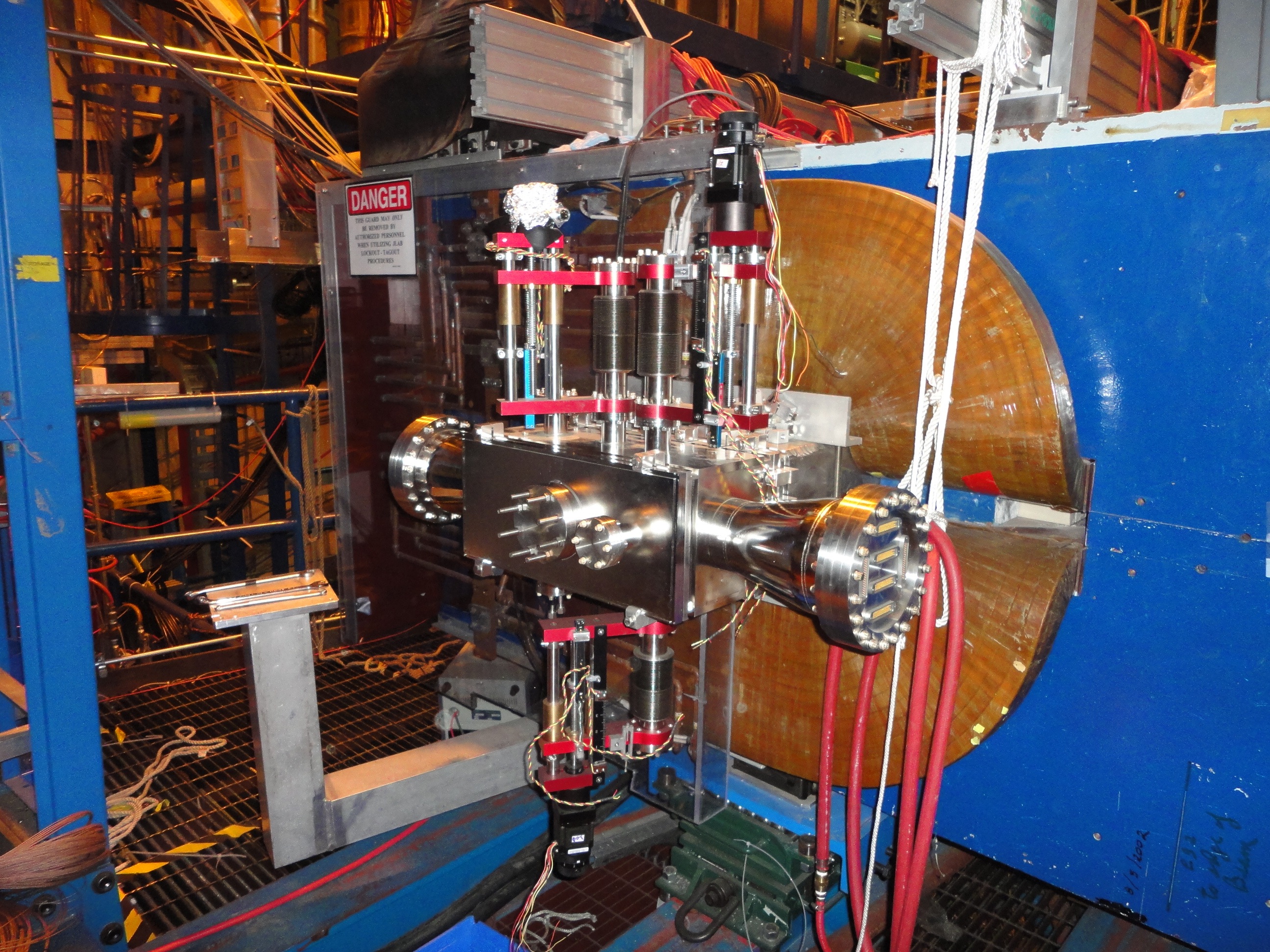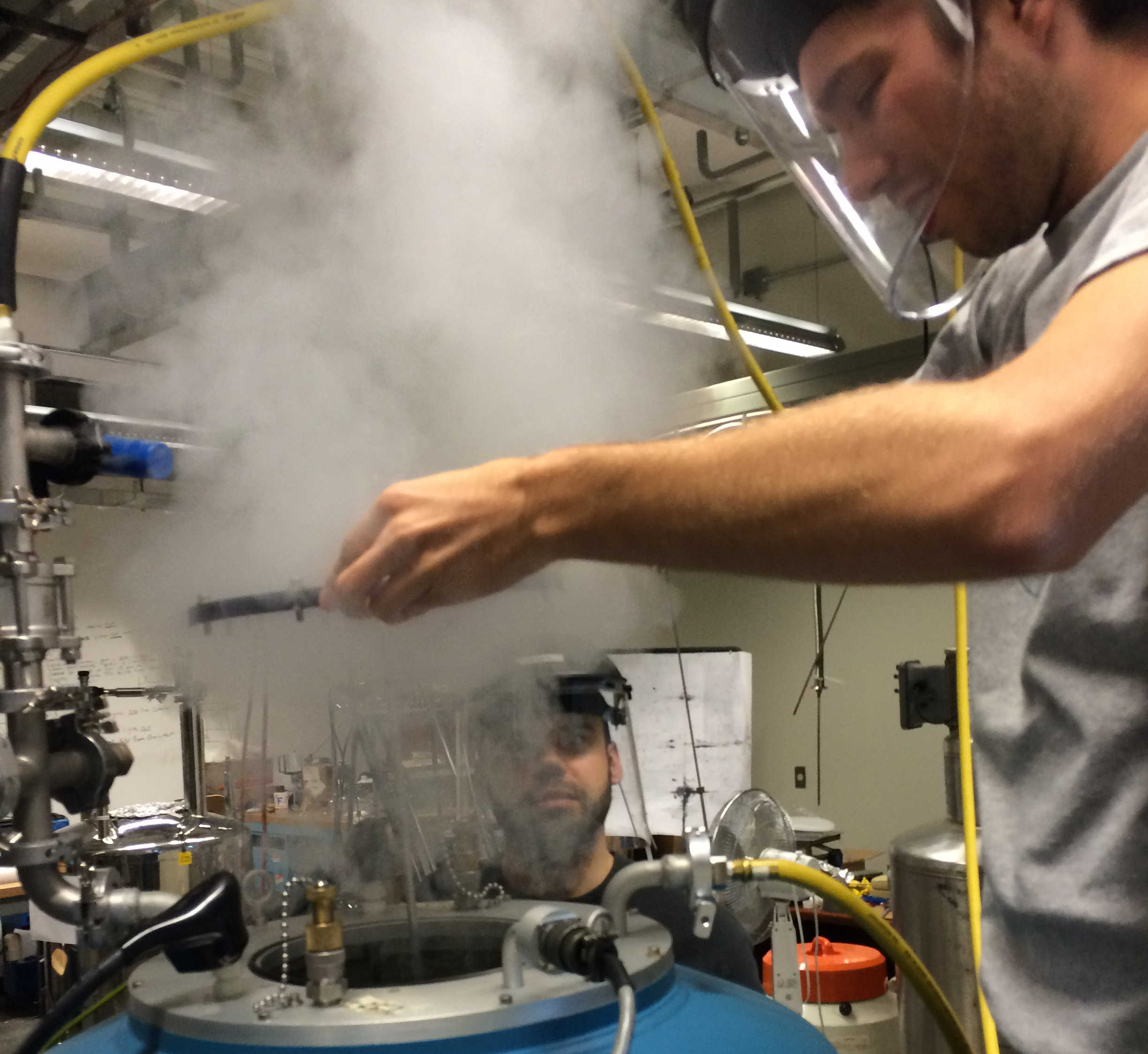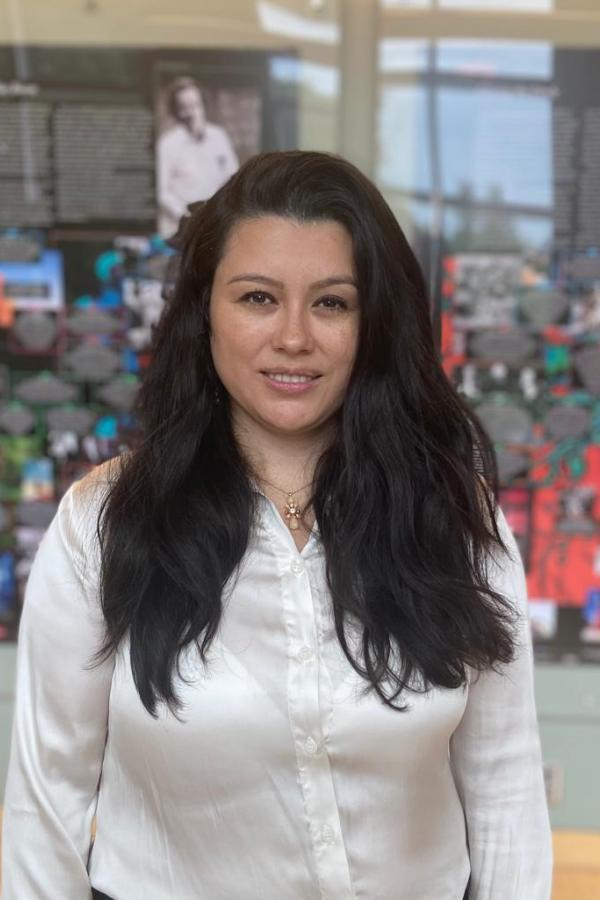Welcome
Welcome to the web pages of the UNH Nuclear and Particle Physics Group, which is part of the UNH Physics Department. The group is located in our new building, the rebuilt DeMeritt Hall. The Nuclear Physics Group’s (NPG) research is aimed at two primary areas of study:
- Searches for physics beyond the Standard Model;
- Understanding the structure of the nucleon and light nuclei, and how this can be described in terms of the strong interaction and spin degrees of freedom.
These mission goals map to two of the top science questions for the 21st century: “What is Dark Matter?” and “What is the missing spin of the nucleon?”
We lead several multi-national collaborations at Jefferson Lab, and are preparing for several additional experiments at this facility. Jefferson Lab is now running at up to 12GeV after a $314M upgrade, which was highlighted as the top priority of the last NSAC (National Science Advisory Committee) report. There are four full time faculty, Maurik Holtrop, Elena Long, Nathaly Santiesteban, and Karl Slifer. The group has two postdoctoral research scientists and six graduate students who work in the NPG on Jefferson Lab projects. Over the past decade we have mentored nine PhDs, and more than twenty undergraduates. These students make significant contributions to our efforts both at UNH and at Jefferson Lab, where they work side by side with some of the top scientists in the field. Our main experimental efforts are:
- UNH is at the forefront of a novel program to investigate tensor spin observables using a new solid tensor polarized target. The JLab b1 (spokespersons: Slifer, Long, Santiesteban) and Azz (spokespersons: Long, Santiesteban, Slifer) experiments were both fully approved in 2022 after a panel review of conditional status. We then organized a workshop dedicated to the physics possible with a tensor polarized target at the European Center for Theoretical Physics (ECT*). And most recently, the experiments’ high physics ratings were affirmed during a `Jeopardy’ status review by Jefferson PAC 51 in 2023. Accordingly, a main focus of our group is prepararation for the Experimental Readiness Review (ERR) and installation of the polarized target at Jefferson Lab.
- The Heavy Photon Search (spokesperson: Holtrop) searches for a new gauge boson –the heavy photon– as a potential particle in a hidden sector that could also contain the Dark Matter.
- The g2p experiment (spokesperson: Slifer) investigates the spin structure of the proton and how this affects the energy levels of hydrogen like systems. The data was recently published in Nature Physics.
- The Isospin SRC experiment (spokesperson: Solvignon) used a tritium target to probe how short-range correlations between nucleons affect the structure of nuclei.
The NPG also operates a cryogenically cooled solid polarized target lab in support of the Tensor Spin Observables program. The system operates at 1 Kelvin and 5-7 Tesla using a mm-wave solid state source to stimulate Dynamic Nuclear Polarization (DNP) of deuterated samples. We recently installed a new helium reliquifier system from Quantum Technologies to support the DNP system. We also operate a material preparation lab where we chemically introduce the paramagnetic impurities necessary for the DNP process, or alternately introduce these centers via irradiation at the NIST MIRF accelerator.


UNH Physics Colloquium – Friday September 29
Speaker: Alexander Jentsch
Institution: Brookhaven National Lab
Title: Assistant staff scientist
Date: 09/29/2022
Title: Illuminating the Strong Force: Our Quest to Understand the Structure of Matter in the Universe with the Electron-Ion Collider
All of the visible matter in our universe exists due to the interactions between quarks and gluons, which comprise protons and neutrons, and allow them to bind together to form atomic nuclei. These interactions arise due to the strong nuclear force, described by Quantum Chromodynamics (QCD). There are many open questions in QCD which require precision measurements of deep-inelastic scattering (DIS) on protons and nuclei to answer. In January of 2020, the US Department of Energy officially green-lit the Electron-Ion Collider (EIC), which will be the best tool to answer these questions in QCD, to be constructed at Brookhaven National Laboratory. Building on the existing infrastructure of the Relativistic Heavy-Ion Collider (RHIC), the EIC will be the first machine capable of colliding polarized electrons with proton and light- ion beams, and of colliding electrons with heavy-ion beams, all over a broad range of center-of- mass energies. In addition, the EIC will operate at incredibly high luminosities up to 10^34 cm^- 2 s^-1, enabling access to statistically challenging measurements inaccessible in previous DIS experiments. In this talk, I introduce the physics of the EIC and the relevant experimental technology required to achieve the science goals of this new facility. Additionally, I will discuss what can be achieved with current experiments at RHIC as we transition to the EIC era over the next decade.


UNH NPG welcomes a new faculty member
Dr. Sandra Nathaly Santiesteban has joined the Physics Department and the Nuclear and Particle Physics Group at UNH in the Fall of 2022. She has an active and growing research program at Jefferson Lab, which centers on studies of the nucleus, specifically investigating Short Range Correlations and spin.
